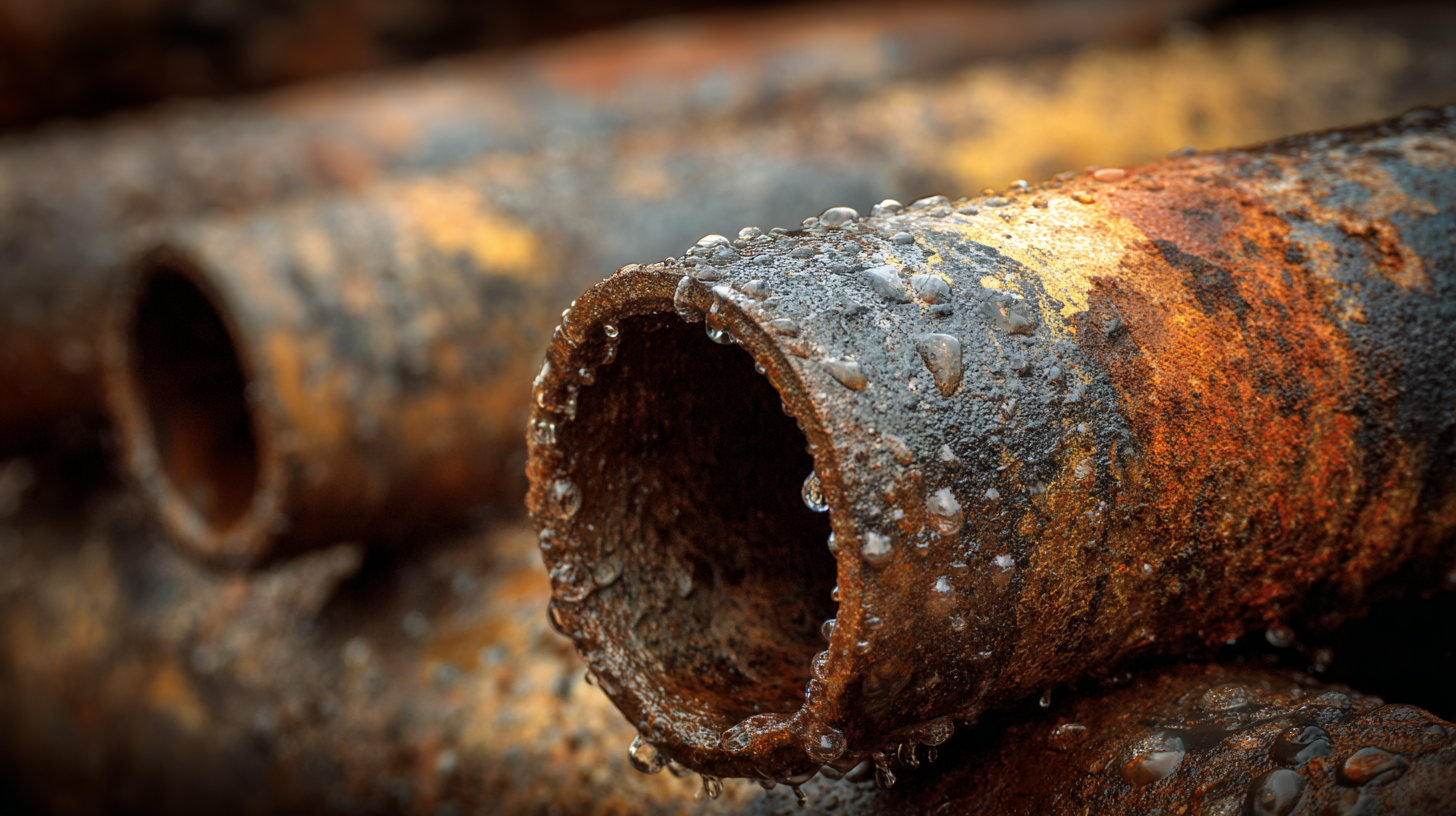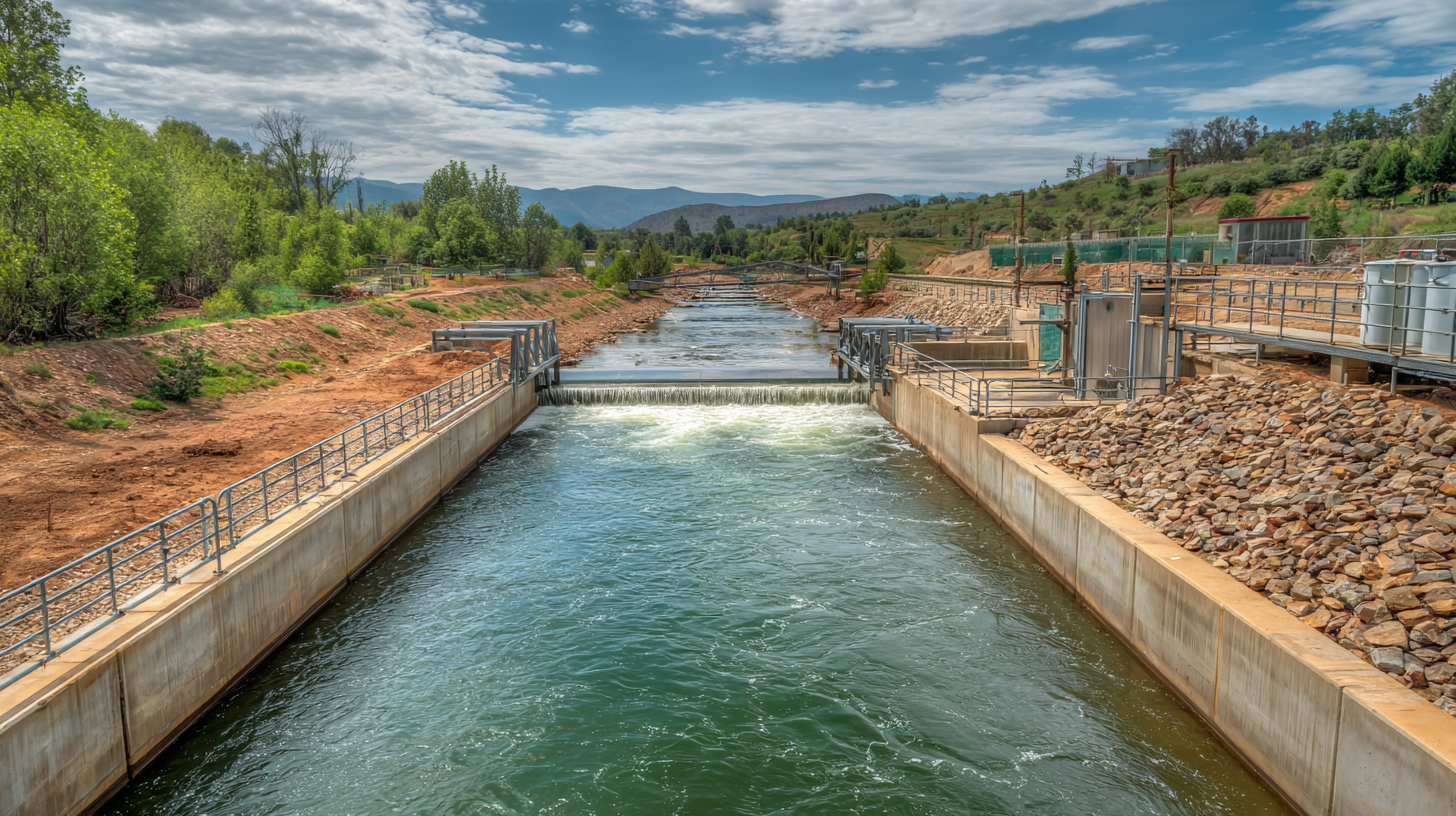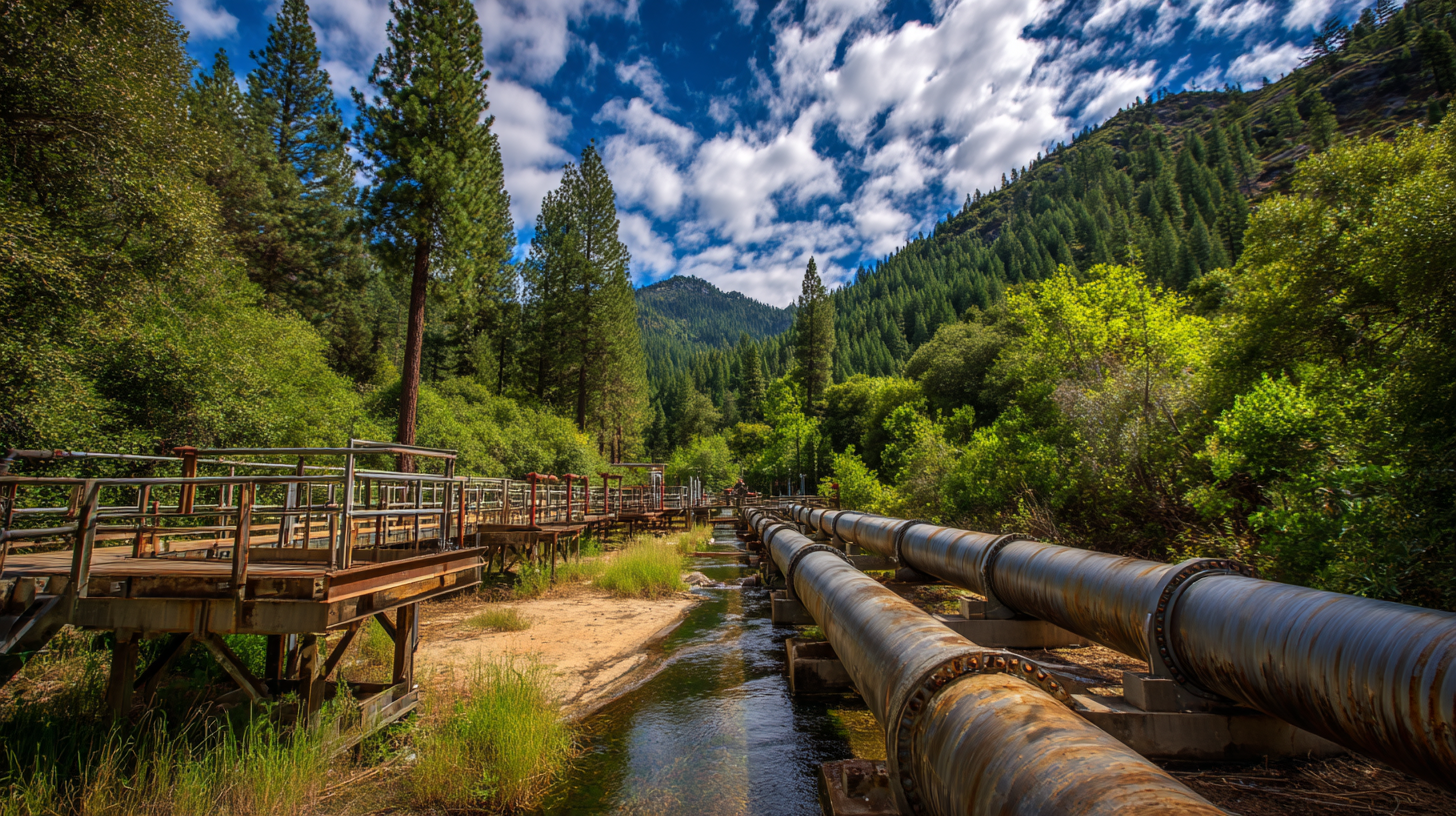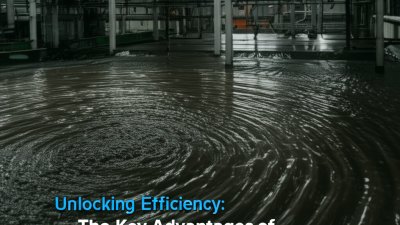

Dealing with groundwater removal is a pretty important part of many industries, especially in oil and gas. When you manage subsurface water well, it can really boost productivity and also help out with keeping things environmentally friendly. In this post, I want to share seven tried-and-true strategies for effective groundwater dewatering that could really help businesses run smoother. At Shanghai Shangjiang Petroleum Engineering Equipment Co., Ltd., we’re all about providing top-notch separation and filtration gear designed to tackle the unique challenges faced by the oil and gas industry. We’re always working on improving our cyclone separation technology—these are crucial for making sure dewatering is done right. By adopting smart, innovative solutions and using the latest tech, companies can not only keep their operations running efficiently but also cut costs and stay eco-conscious. So, stick around as we dive into these approaches, aiming for more efficient and greener groundwater management.

Dewatering is a pretty important part of construction work, especially in the oil and gas industry. If you don't manage groundwater properly, it can really mess things up, causing delays and driving up costs. The EPA even reports that bad dewatering practices can lead to flooding, erosion, and unstable construction sites — so having solid groundwater management strategies is a must. When you use proven dewatering techniques, you can avoid those issues, creating a safer and more stable work environment.
At Shanghai Shangjiang Petroleum Engineering Equipment Co., Ltd., we totally get how crucial advanced separation technologies are for effective dewatering. We’re dedicated to developing innovative cyclone separation products that actually work — they drop water levels down while keeping everything structurally sound. According to the National Institute for Occupational Safety and Health, good dewatering can cut labor costs by up to 30%, which shows how it’s not just about safety but also saving money. As construction projects get more complex, using cutting-edge filtration and separation equipment really becomes an essential part of the game for successful dewatering.
Overall, it’s all about staying ahead with the right tech and strategies to make sure everything runs smoothly and safely — that’s what really makes the difference.
| Strategy | Description | Benefits | Best Applications |
|---|---|---|---|
| Sump Pumps | Utilizing pumps to remove groundwater from a construction site. | Cost-effective and easy to install. | Excavation and trenching projects. |
| Wellpoints | A network of small-diameter wells connected to a vacuum system. | Highly efficient in lowering the water table. | Deep excavations and large construction sites. |
| Deep Wells | Using deep wells to lower groundwater levels over a large area. | Effective for large-scale projects. | Industrial sites and large infrastructures. |
| Shallow Excavation | Excavating only to shallow depths with minimal groundwater. | Reduced dewatering costs. | Smaller construction areas. |
| Gravel Packing | Creating gravel layers to facilitate drainage. | Low maintenance and durable solution. | Landscaping and foundation work. |
| Trench Drains | Excavating trenches filled with drainage materials. | Effective for directing surface water. | Parking lots and roadways. |
| Cofferdams | Temporary enclosures to hold back water. | Safe working conditions for underwater work. | Bridges and marine constructions. |
Good groundwater management really isn’t just a tech thing—it’s a must for industries like construction, mining, and farming. One big perk? It helps prevent water from piling up on sites, which can cause annoying delays and even safety issues. When companies use tried-and-true methods like wellpoint systems or sump pumps, they keep the work area dry and stable, making everything run smoother and faster.
And here’s the cool part: managing groundwater properly isn’t just good for business—it helps the environment too. By keeping groundwater levels in check, we can avoid messing up nearby ecosystems. Plus, it stops local water sources from getting contaminated or overused. Techniques like controlled drainage and recharge not only help out with a specific project but also support the health of the environment in the long run. It’s a win-win—better operations and a healthier planet. Bottom line: smart groundwater solutions are kind of essential because they help you get things done without sacrificing environmental responsibility.
Dealing with groundwater dewatering effectively is super important for all sorts of construction and industrial projects. Did you know? According to a report from Grand View Research, the global market for dewatering pumps is projected to hit around USD 5.7 billion by 2025. That's mainly thanks to the increasing need to control water buildup and keep project sites running smoothly. Using really advanced techniques can go a long way in reducing water-related issues, especially in oil and gas operations where managing water is directly tied to safety and productivity.
One of the best methods to tackle water accumulation is through high-efficiency cyclone separation systems. Companies like Shanghai Shangjiang Petroleum Engineering Equipment Co., Ltd. are big on developing these kinds of tech, which are crucial for effectively separating water from hydrocarbons. Incorporating these modern filtration and separation solutions not only boosts efficiency but also helps lessen environmental impacts—think better water reuse and overall water quality management. Thanks to ongoing innovations, especially in cyclone separation tech, businesses can stay compliant with tough industry rules while making smarter use of resources.
 Effective dewatering systems aren't just about managing groundwater during construction—they actually come with some pretty cool long-term perks too, like making projects more sustainable and saving money in the long run. I came across a report from the International Society for Soil Mechanics and Geotechnical Engineering that says a smartly designed dewatering setup can cut down construction delays by as much as 30%. That’s a big deal, especially in cities where time is tight and any unexpected groundwater issues can end up costing a ton of money and delay everything. Trying to keep things on schedule is essential, right?
Effective dewatering systems aren't just about managing groundwater during construction—they actually come with some pretty cool long-term perks too, like making projects more sustainable and saving money in the long run. I came across a report from the International Society for Soil Mechanics and Geotechnical Engineering that says a smartly designed dewatering setup can cut down construction delays by as much as 30%. That’s a big deal, especially in cities where time is tight and any unexpected groundwater issues can end up costing a ton of money and delay everything. Trying to keep things on schedule is essential, right?
Plus, having a good dewatering system actually makes the site safer and helps you stay on the right side of environmental rules. The EPA points out that sites with solid groundwater management are less likely to cause soil and water contamination around them. And if things go wrong, well, you could face hefty fines and even more costs for cleanup — sometimes over 50% more than you'd expect. So honestly, investing in advanced dewatering tech isn’t just about the here and now; it’s also about protecting the environment and avoiding big headaches down the road.
Effective dewatering solutions are absolutely key when it comes to reducing the environmental footprint of groundwater pumping. With cities growing so fast these days, there's a real buzz around managing wastewater more efficiently — especially when it comes to sludge dewatering. Recent research shows that new tech innovations are really stepping up, helping to boost dewatering performance while also cutting down on energy use. For example, in the U.S., the market for sludge dewatering equipment was worth about $609 million in 2024, and experts are predicting it could jump to nearly $993 million by 2033. That really shows how much demand there is for greener, smarter practices.

Plus, using advanced materials like polyethylene oxide in treating food waste digestate is showing some pretty promising results. These types of conditioning agents are making it easier to handle deep dewatering issues, all while helping to cut down on environmental pollution and making wastewater systems more energy-efficient. Looking at different sludge management scenarios in places like Australia, it’s clear that we need sustainable approaches that not only make economic sense but also respect the environment. Ultimately, focusing on innovative solutions is a great way to push the industry toward more sustainable and responsible practices.
All in all, staying ahead with these new technologies and methods is what’s really going to make a difference in balancing groundwater extraction with environmental care — and that’s something we should all be working towards.
Using advanced dewatering techniques can really make a difference when it comes to saving money and boosting efficiency on construction and environmental projects. Things like deep well pumping, trenching, and using geotextiles are some of the coolest tools out there. They help reduce groundwater levels effectively while keeping the surrounding environment safe. Not only do these methods make site prep smoother, but they also help keep the project’s structural integrity intact—so you’re less likely to run into expensive delays or repairs down the road.
Jumping on these cutting-edge technologies can actually save you quite a bit of cash. For example, if you pump less water and treat it right there on site, you can cut down on transport and disposal costs. Plus, doing the dewatering more efficiently means the whole project wraps up faster, which means lower labor costs and better use of your resources. And let’s not forget, with sustainability being such a buzzword, these strategies aren’t just good for the wallet—they also show you care about the environment, making it a win-win for everyone involved.
: Effective groundwater management solutions prevent water accumulation in work areas, minimize costly delays, enhance safety, improve operational efficiency, and contribute to environmental sustainability.
Dewatering strategies like wellpoint systems and sump pumps ensure a dry and stable work environment, which is crucial for industries like construction, mining, and agriculture.
It minimizes the impact on surrounding ecosystems and protects local water resources from contamination and over-extraction by controlling groundwater levels.
Advanced technologies include deep well pumping, trenching, and the application of geotextiles to effectively reduce groundwater levels while minimizing environmental impact.
These strategies reduce the volume of water pumped out and treated on-site, helping to avoid transportation and disposal costs, thereby saving money.
Improved efficiency in dewatering operations leads to faster project completion, which correlates to lower labor costs and better resource allocation.
They align financial outcomes with environmental best practices, supporting the sustainability goals of industries while enhancing operational success.
Failing to implement these solutions can lead to water accumulation, causing delays, safety hazards, and potential environmental damage.
Yes, strategies like controlled drainage and groundwater recharge promote long-term environmental health and sustainability while benefiting immediate projects.
Industries prioritize these solutions due to their ability to combine operational success with responsible resource management and environmental sustainability.
Dewatering groundwater is pretty much a must-do in construction projects — it keeps the site dry and workable. When folks really get how important good groundwater management is, they can enjoy some real perks, like safer sites, fewer worries about structural issues, and easier access for everyone. Using the right methods to control water buildup not only solves immediate problems but also offers long-term benefits, like reliable dewatering systems that keep things running smoothly over time.
On top of that, going for eco-friendly dewatering practices can really cut down the environmental footprint of construction work. More and more, companies need to stay in line with new rules and community expectations. Take Shanghai Shangjiang Petroleum Engineering Equipment Co., Ltd., for example — they’re doing a great job developing cutting-edge separation and filtration tech to keep water management on point. By making the most of these innovative solutions, businesses can save a ton of money and boost efficiency, which just goes to show — managing groundwater isn’t just a technical detail, it’s actually a key part of any successful construction project.






